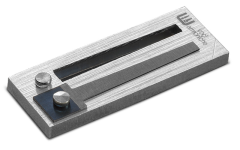Hello everyone, I am in the market selecting an accordion and I hope you can share some knowledge about reeds.
While browsing through the catalogs of different accordion brands, I noticed the section on reed quality. Some are marked as SD, some as H, and others as TAM (which I guess means Tipo A Mano) or A plus, etc. I would like to know the meanings of these abbreviations and how they rank in terms of quality.
Do these abbreviations represent quality rather than brand? Eg. reeds of Durall/superdurall is a brand or a class of quality? Is the quality of reeds of the same grade similar across different brands? Which brand or grade of reeds should we prioritize in our selection? Any insights would be apprieciated.
While browsing through the catalogs of different accordion brands, I noticed the section on reed quality. Some are marked as SD, some as H, and others as TAM (which I guess means Tipo A Mano) or A plus, etc. I would like to know the meanings of these abbreviations and how they rank in terms of quality.
Do these abbreviations represent quality rather than brand? Eg. reeds of Durall/superdurall is a brand or a class of quality? Is the quality of reeds of the same grade similar across different brands? Which brand or grade of reeds should we prioritize in our selection? Any insights would be apprieciated.


